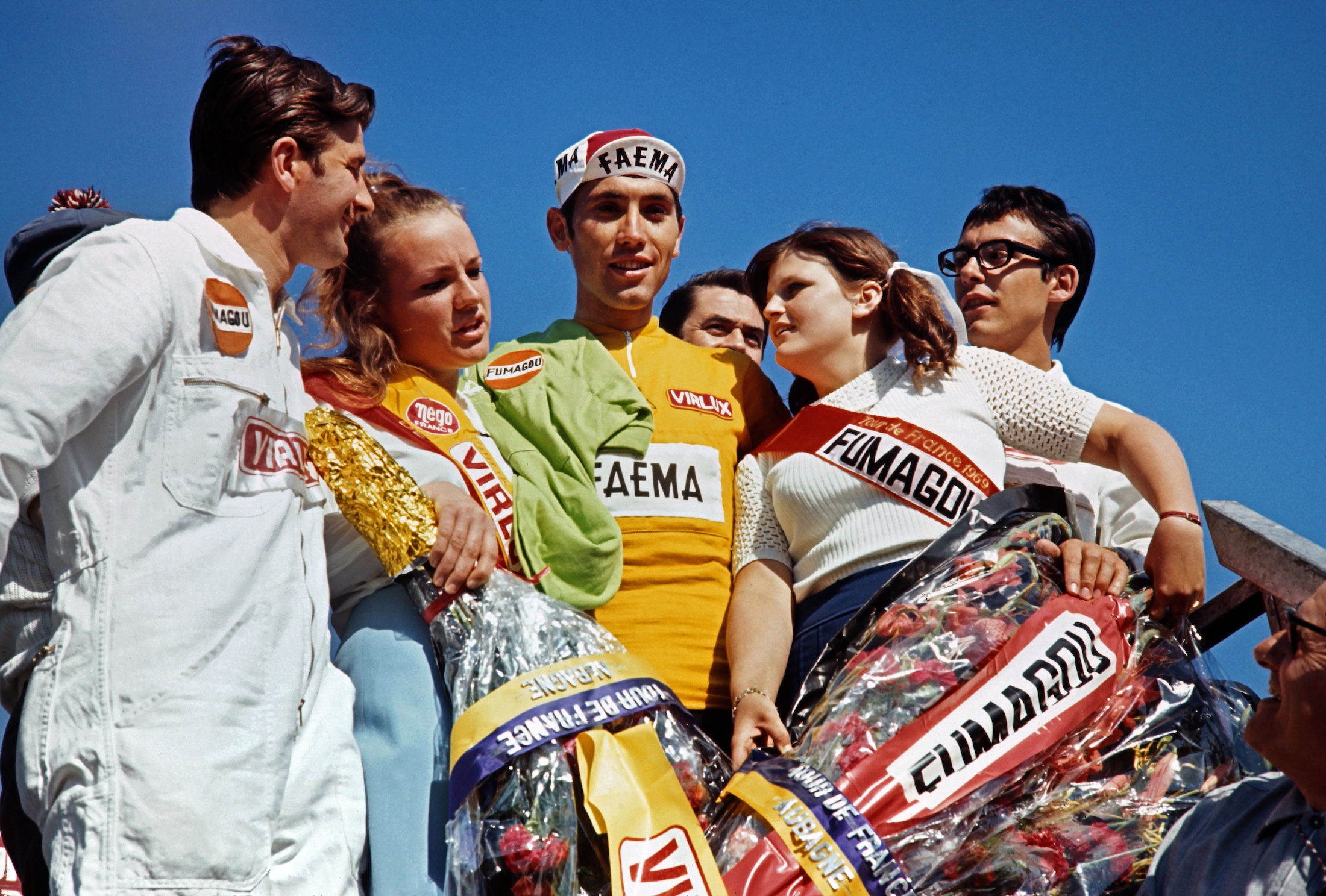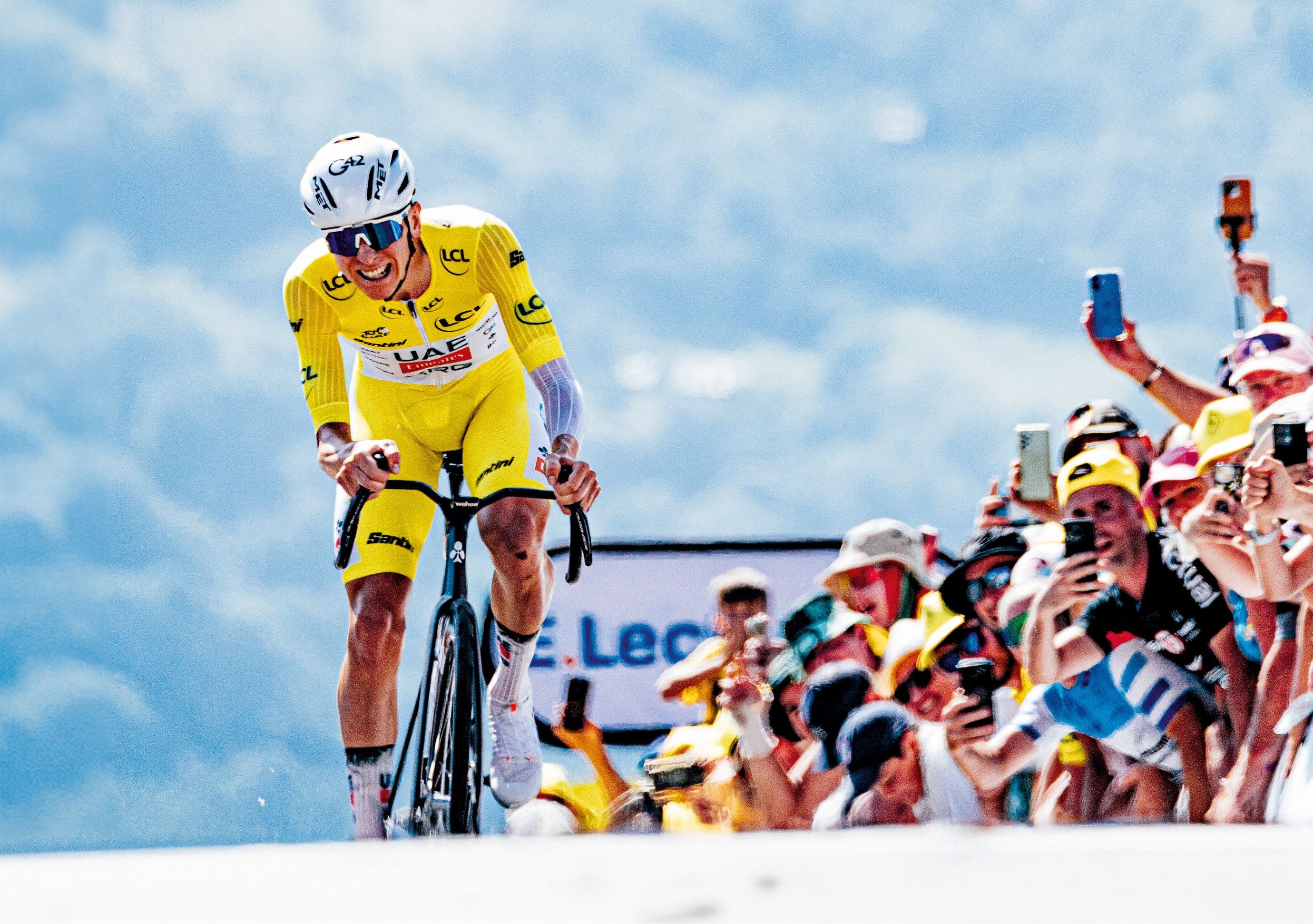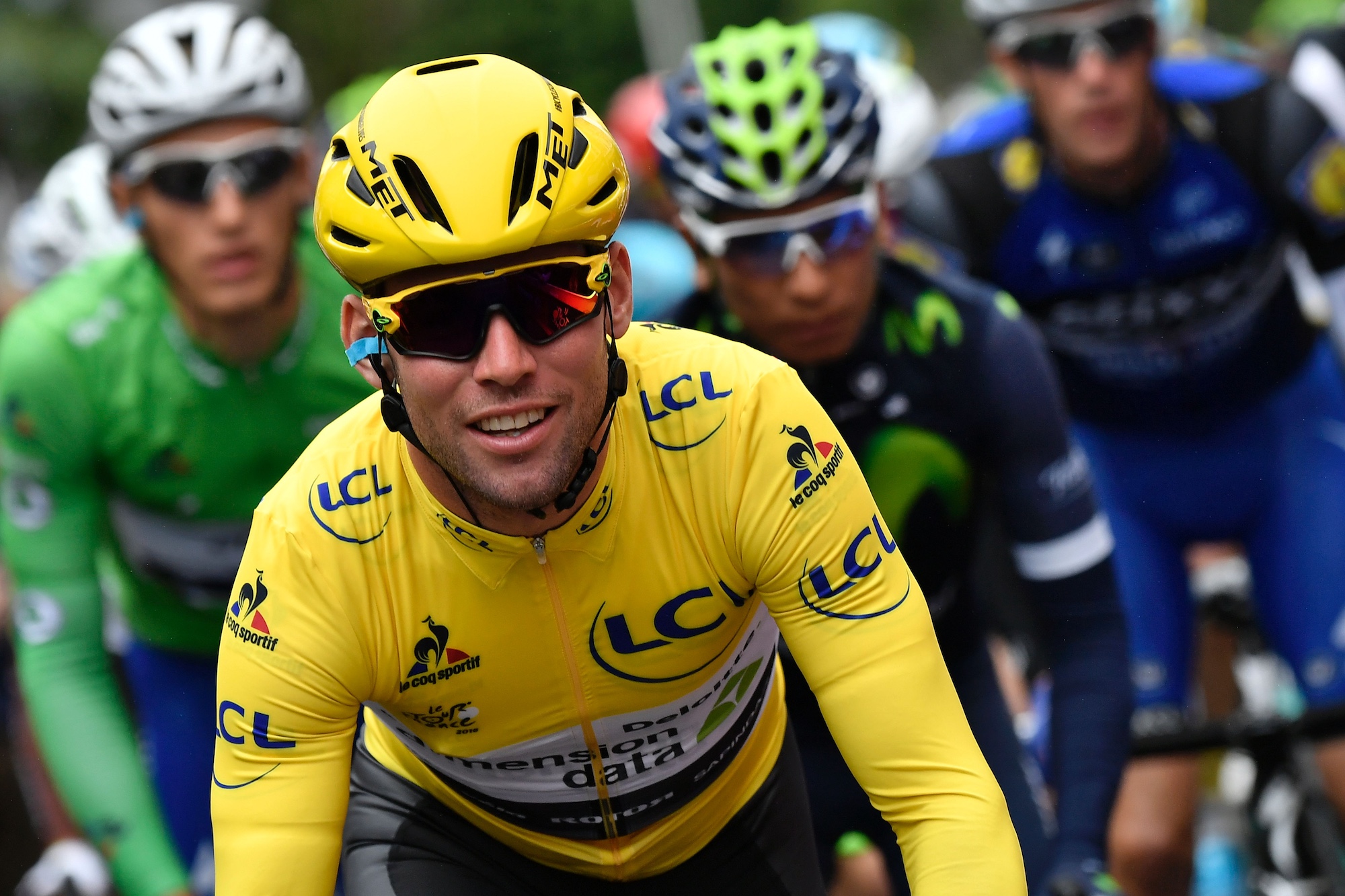Yellow Jersey: This history of the most iconic piece of clothing in sport
The symbol of the Tour de France, and a jersey that some people think you shouldn't wear when out riding your bike

The Maillot Jaune is the most iconic piece of clothing in all sport. The Masters green jacket is purely ceremonial, while football and rugby shirts are team kits, strong in identity for the players and their fans. Worn week in, week out, it is a uniform to identify a team and bring them together. A symbol of unity they are regularly adapted and updated, and sold in their millions.
The Olympics gives out medals, while other sports give out trophies - the Tour does too, but the trophy receives minimal attention . The Tour de France gives out a jersey. Little more than a tailored piece of lycra it is next to worthless, but for the rider whose torso it hugs, it is priceless. A golden cloak that has the power to transform their career. Maybe even their life.
Worn throughout July by a single rider who leads the race on that given day it shows the riders and the fans who is the leader on general classification. The rider who up until the end of the previous stage has covered all the stages in the least time.
They may not win it when the race finishes in Paris, they may not even make it to Paris, but for one, two or more stages they are the leader of the biggest annual sporting event in the world.
For three weeks every July - four weeks now the Tour de France Femmes extends the action - the riders who get to wear yellow is the centre of attention, leading the news bulletins and appearing on the front pages. They get respect in the peloton, and more freedom to move around the bunch as it winds it's way to the stage finish; presented to the fans, escorted by Gendarmes through crowded roads and cheered by the people at the side of the road.
The storied jersey, that dates back to an inauspicious start midway through the 1919 race, gives the individual both the responsibility of leading the race while simultaneously putting a target on their back.
A day in yellow can make a career of an unknown rider, while some of the sports biggest names may never get to wear it. As soon as the race is finished, it’s gone for another year. It is as powerful as it is fleeting.
The latest race content, interviews, features, reviews and expert buying guides, direct to your inbox!
It is also the subject of a book, written by Peter Cossins. Here he talks through his reasons for writing the book and the surprising stories he unearthed in his research.

Soon after I started working at Cycling Weekly magazine in the early 1990s, the magazine received a set of Tour de France jerseys for test and review. The polka-dot version of the King of the Mountains was swiftly bagged, the green and white jerseys were claimed soon after, but nobody was interested in what was at that time a quite orangey yellow jersey generally associated with being on the shoulders of five-time champion Miguel Indurain. It would, I thought, be the perfect summer replacement for the Dayglo yellow jacket that I wore when riding to the office and back.
A couple of days later, I’d just arrived for work resplendent in the jersey when a voice bellowed out, “You can’t wear that, Cossins. You haven’t won the Tour de France.” Initially, I laughed along with what I assumed was a joke. “I’m not kidding. Unless you’ve at least led the Tour, you shouldn’t be seen dead in that jersey,” my colleague asserted.
That was the last time I wore it. That evening I washed it and put it in a drawer. Twenty-five years later, it’s still there, pristine, almost unused, suffused with the scent of a Laura Ashley Summer Breeze drawer liner.
I can’t draw a direct link between that incident and my decision to set about writing a book about the yellow jersey to coincide with the centenary of its inception, but it did highlight its exclusivity and uniqueness as a sporting prize. During most seasons, the only cyclist I can recall seeing in a yellow jersey was the Tour leader.
Yes, there are banners, bunting, caps, T-shirts and just about every other type of accessory in yellow, but almost never a jersey. One French journalist told me that it’s actually forbidden to wear the maillot jaune. “It belongs to the Tour leader, and him alone. He’s like Louis XIV, the Sun King, reincarnated in a cycling jersey,” he affirmed.

Tadej Pogačar is the current rider you're most likely to see in yellow. Paired with yellow shorts as part of a skinsuit here.
It initially struck me that there might be some merit in a book on the jersey when reading Cyrille Guimard’s evisceration of the final days of Thomas Voeckler’s long spell in yellow during the 2011 race. According to the legendary team manager, Voeckler became so intoxicated by the power, both physical and hierarchical, that leading the Tour instilled in him, that he started to believe he could do almost anything on the bike and didn’t need to listen to anyone’s counsel.
The Frenchman, who dropped from race leader three days from Paris to fourth when the Tour entered the French capital, had, argued Guimard, become “his own directeur sportif” and ridden in tactically the opposite way to how he should have.
This tale of how the jersey can motivate and madden formed part of my initial pitch to Tim Broughton, the editor at Yellow Jersey Press — the obvious first choice. Instead of yes or no, Tim’s first response was, “I can see the cover already.” The image that now adorns the printed version is precisely in line with what Tim described to me that day.
Undistinguished origins of the yellow jersey
As is often the case when progressing slowly from the initial proposal to the final published version, my research took me in many unexpected directions. For instance, in trying to get to the bottom of the convoluted story about the maillot jaune’s inception, which is essentially buried with the characters involved, it became apparent that the yellow jersey meant very little to riders, fans and even the race organiser for several seasons.
This stemmed partly from general ambivalence and even dislike for the colour yellow. Associated with treacherous behaviour — Judas is often depicted wearing a yellow cloak in medieval paintings — cowardice, prostitution and cuckolds, its first appearance on the shoulders of Eugène Christophe on the morning of July 19, 1919 triggered gibes from his rivals rather than any sense of respect.
Yet, over subsequent decades, as the jersey’s status and influence has increased to an almost incomparable level, yellow has also become more favourably regarded, its prestige also boosted by the brilliant flamboyance of Brazil’s football team.
This is particularly apparent in France, where the Tour and its defining symbol signal the arrival of the heat of summer, of the holiday season, of memorable family moments, often including a day watching the race, hoping for a glimpse of the rider in the fabled tunic. At the same time, the term maillot jaune has become part of common parlance, often used to describe leaders in the business, political and other spheres.

Even the best sprinters only get the chance of a day or two in yellow in their careers
An enduring prestige
Initially derided and often sullied by the dirty antics of some who have worn it, the yellow jersey’s cachet has meant that its reputation has not been tainted by association. Although questions are often asked of the rider who claims it, often because he is seen as a figurehead for the whole sport, the maillot jaune has retained an iconic symbolism.
“I think one of the interesting things about the yellow jersey is that it is emblematic of the Tour and not necessarily of the winner,” Michel Mathieu, director-general of jersey sponsors LCL, told me. The French bank, which shares the Tour’s yellow and blue colours, has sponsored the jersey since 1987, and currently invests €10 million a year to maintain a link that ensures that its branding appears on the Tour leader’s chest every day. “It’s a great story, a love affair that continues to thrive,” said Mathieu of an investment that guarantees an immense profile and is all but risk-free, which makes it almost unique in cycling.
Taking a wider perspective and comparing it with other iconic sporting prizes, the yellow jersey still stands apart. As the emblem of a race rather than a team, it doesn’t foster passionate and unquestioning support among fans. Equally, although it is often likened to the green jacket awarded to the winner of the US Masters golf tournament, it has a more exalted status, because the winner has to fight for it and defend it for such an extended and usually very intense period, rather than being presented with it when the event is won. The victor may not be widely loved or idolised, but tends to be hugely admired and set apart by his radiant garb as cycling’s Sun King.
Peter Cossins has been writing about professional cycling since 1993, with his reporting appearing in numerous publications and websites including Cycling Weekly, Cycle Sport and Procycling - which he edited from 2006 to 2009. Peter is the author of several books on cycling - The Monuments, his history of cycling's five greatest one-day Classic races, was published in 2014, followed in 2015 by Alpe d’Huez, an appraisal of cycling’s greatest climb. Yellow Jersey - his celebration of the iconic Tour de France winner's jersey won the 2020 Telegraph Sports Book Awards Cycling Book of the Year Award.
You must confirm your public display name before commenting
Please logout and then login again, you will then be prompted to enter your display name.